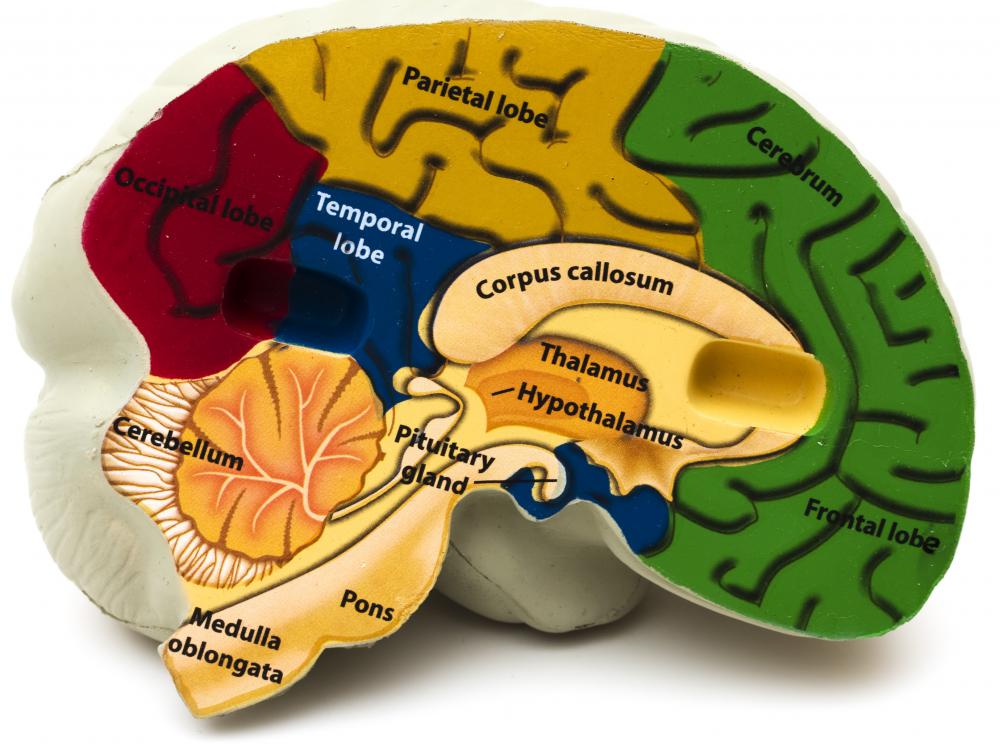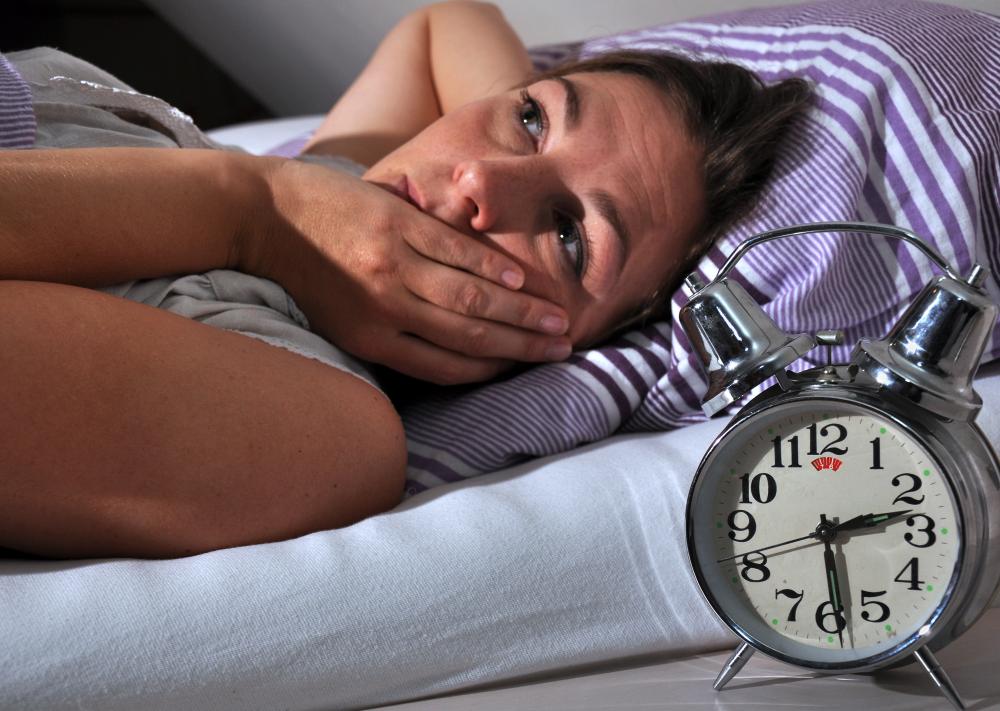At WiseGEEK, we're committed to delivering accurate, trustworthy information. Our expert-authored content is rigorously fact-checked and sourced from credible authorities. Discover how we uphold the highest standards in providing you with reliable knowledge.
What is PLMD?
Periodic Limb Movement Disorder (PLMD) is a condition in which an individual’s arms or legs move during sleep. Formally referred to as nocturnal myoclonus, PLMD is not the same as the normally occurring night muscle spasms that exist when falling asleep. In this condition, limb movement takes place in 20 to 30 second intervals, five or more times per hour. These movements happen consistently throughout the night during non-REM sleep periods.
PLMD episodes will generally involve partial flexing of the ankle, knee, big toe, and sometimes the hips. Restless Leg Syndrome (RLS) is the most common form of this disorder. People with this condition have a restless feeling in the legs, accompanied by cramps, muscle twitching, and muscle aches.

PLMD can range in severity from small, continuous ankle movements, to flailing of the arms and legs or strenuous kicking motions. Oral, nasal, and abdominal movement can also occur. In periodic limb movement disorder, the sufferer is usually not aware of the repetitive motions. Those afflicted with this condition commonly complain of difficulty falling asleep and staying asleep, or inability to stay awake during daytime hours.

Individuals affected by PLMD also report hot and cold feet, burning sensations in the limbs, and depression. This debilitating disorder is know to cause poor sleeping habits, which can result in excessive daytime sleepiness and insomnia. The occurrence of periodic limb movement disorder increases with age. It is estimated that in the United States, PLMD occurs in 5% of people age 30 to 50, and 44% of those over 65 years of age.

The cause of periodic limb movement disorder is currently unknown. Some physicians hypothesize that the thalamus and cerebellum of the brain could be involved, while others believe that the condition originates in the spinal cord. PLMD often occurs in individuals with rheumatoid arthritis, kidney disease, or metabolic disorders. The condition is also associated with circulatory problems.
The initial step in treating PLMD is to find the underlying cause. Diabetes, anemia, and some antidepressants can cause leg movement. Treatment of these existing problems can often relieve the symptoms associated with this condition.

There are numerous medications that can help a person affected by PLMD. Sleeping pills may prevent frequent awakenings; however, these pills will not reduce leg movements. Pain medication can reduce the number of movements, but does not effectively treat insomnia. Medication used in treating Parkinson’s disease seems currently to be the most effective treatment of movement and insomnia associated with PLMD. Vitamin and mineral supplements have also shown successes, but have yet to be clinically proven.
AS FEATURED ON:
AS FEATURED ON:














Discuss this Article
Post your comments